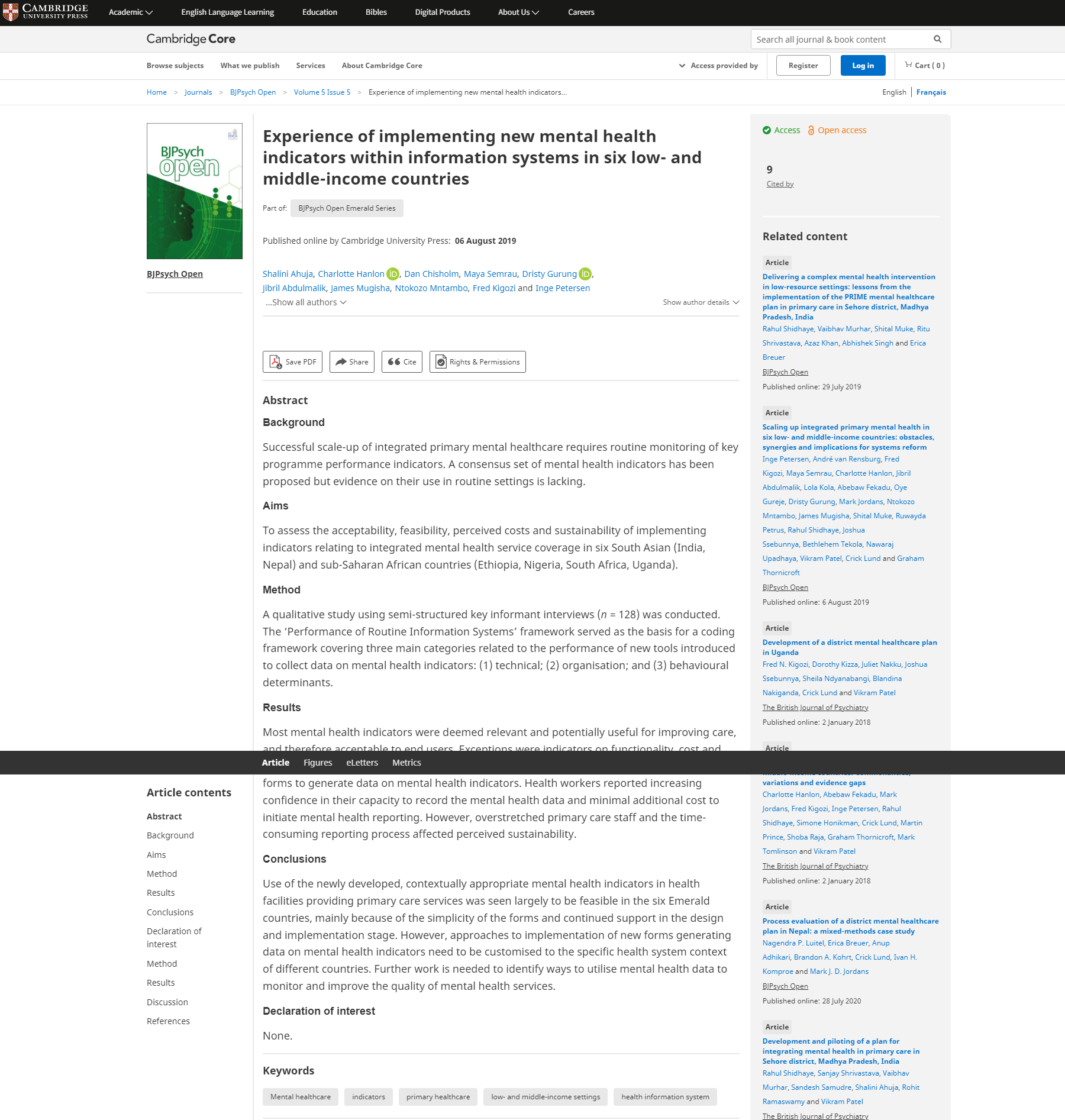Experience of implementing new mental health indicators within information systems in six low- and middle-income countries

View/
Date
2019-08-06Author
Ahuja, Shalini
Hanlon, Charlotte
Chisholm, Dan
Semrau, Maya
Gurung, Dristy
Abdulmalik, Jibril
Mugisha, James
Mntambo, Ntokozo
Kigozi, Fred
Petersen, Inge
Shidhaye, Rahul
Upadhaya, Nawaraj
Lund, Crick
Evans-Lacko, Sara
Thornicroft, Graham
Gureje, Oye
Jordans, Mark
Metadata
Show full item recordAbstract
Successful scale-up of integrated primary mental healthcare requires routine monitoring of key programme performance indicators. A consensus set of mental health indicators has been proposed but evidence on their use in routine settings is lacking.
Aims
To assess the acceptability, feasibility, perceived costs and sustainability of implementing indicators relating to integrated mental health service coverage in six South Asian (India, Nepal) and sub-Saharan African countries (Ethiopia, Nigeria, South Africa, Uganda).
Method
A qualitative study using semi-structured key informant interviews (n = 128) was conducted. The ‘Performance of Routine Information Systems’ framework served as the basis for a coding framework covering three main categories related to the performance of new tools introduced to collect data on mental health indicators: (1) technical; (2) organisation; and (3) behavioural determinants.
Results
Most mental health indicators were deemed relevant and potentially useful for improving care, and therefore acceptable to end users. Exceptions were indicators on functionality, cost and severity. The simplicity of the data-capturing formats contributed to the feasibility of using forms to generate data on mental health indicators. Health workers reported increasing confidence in their capacity to record the mental health data and minimal additional cost to initiate mental health reporting. However, overstretched primary care staff and the time-consuming reporting process affected perceived sustainability.
Conclusions
Use of the newly developed, contextually appropriate mental health indicators in health facilities providing primary care services was seen largely to be feasible in the six Emerald countries, mainly because of the simplicity of the forms and continued support in the design and implementation stage. However, approaches to implementation of new forms generating data on mental health indicators need to be customised to the specific health system context of different countries. Further work is needed to identify ways to utilise mental health data to monitor and improve the quality of mental health services.
